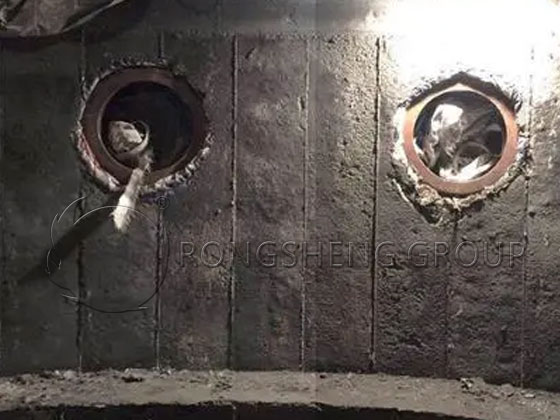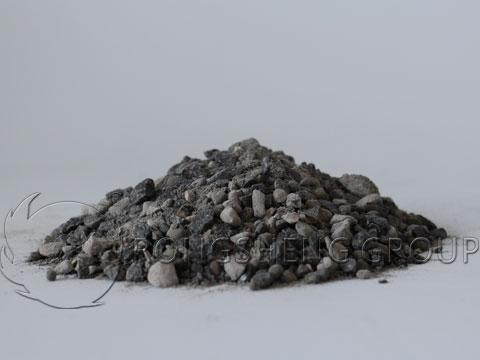Monomorphous Refractory Materials for Blast Furnaces
How to use unshaped refractory materials in blast furnaces, and what are the characteristics and uses of unshaped refractory materials? The development and application of amorphous refractory materials can effectively improve the construction efficiency of the furnace lining, shorten the construction period, improve the integrity of the furnace lining, and enhance the overall performance of the lining body. It can effectively help enterprises reduce the number of furnace shutdowns and furnace repairs and improve economic benefits. Rongsheng Unshaped Refractory Castable Materials Manufacturer is a professional manufacturer and seller of refractory furnace lining materials. Furnace lining solutions can be customized according to the actual working conditions of the kiln. Contact us to get free samples and quotes.

Characteristics of Unshaped Refractory Materials Commonly Used in Blast Furnaces
Compared with shaped refractory materials, the entire combustion process is canceled during the manufacturing process, which also makes the material itself amorphous. This is because the production process of amorphous refractory materials is relatively simple, and the materials are malleable. In the subsequent use process, unshaped refractory materials have the characteristics of convenient shaping. In this regard, during the casting process of the preliminary equipment, this method can be used to carry out the internal transformation of its furnace construction. This not only ensures cost reduction, but the simple manufacturing process can also increase the processing speed. It is worth noting that the service life of amorphous refractory materials is similar to that of refractory bricks, and its fire resistance and chemical stability can also reach the level of refractory bricks of the same type. Therefore, prefabrication can also be carried out before the furnace lining construction, and the unshaped refractory materials can be directly made into larger refractory precast blocks. Then, it is baked at low temperature before use, so as to ensure that it can survive long-term use inside the casting blast furnace. It can effectively extend the service life of the inner wall of the blast furnace and reduce the occurrence of internal damage caused by temperature changes.
The Use of Amorphous Refractory Materials in Blast Furnaces
- (1) When manufacturing the internal structure of a blast furnace, the brick joints are the weak links of the blast furnace brick masonry. This also makes the corrosion process mainly destroy the joints during its application. In order to ensure that the overall service life of the blast furnace is extended, the damage and damage caused by furnace lining erosion can also be reduced. When filling the brick joints, it is necessary to use refractory mud to modify them, so as to ensure that the sealing degree of the furnace lining can be improved. Since refractory mud itself is an amorphous refractory material, during the preparation process, in order to ensure the overall adhesion and refractory degree, it is necessary to identify the brick joint material of the furnace lining. And the temperature of its application effect needs to be debugged, and then its gaps must be matched. This can ensure that after the filling is completed, the blast furnace lining can completely form a smooth hole. This ensures that the overall high-temperature resistance of the lining is reduced due to erosion.
- (2) During the process of stacking the blast furnace lining, it is necessary to ensure that there is a cooling stave between the lining and the furnace shell. This kind of cooling stave requires the addition of filler so that the insulation or adhesive between the two layers of furnace lining can form its own protective film. And it can also bring out the application effect of internal substances. When a blast furnace is put into production for a period of time, the waist and lower part of the furnace body will be severely eroded due to the erosion of thermal energy. This also causes the composite energy to increase when it is working, causing the cooling equipment to be damaged under high temperatures and high pressure. At this time, bulges or cracks will appear on the surface of the furnace shell. In this regard, it is necessary to press the amorphous refractory material into the extended furnace body through the grouting method, so as to effectively increase the service life of the blast furnace. It can also reduce a series of safety risks caused by equipment damage.
- (3) When cracks appear in the blast furnace lining, the surface can be treated by gunning the lining. Under normal circumstances, a layer of unshaped refractory material needs to be sprayed at this time to prevent fission caused by cracks. At the same time, the blast furnace itself is forged with high-quality bauxite and graphite as the main raw materials. Therefore, adding a certain amount of silicide can ensure that it becomes a hard object after high pressure and high temperature. It has the functions of high-temperature resistance and good thermal conductivity. Therefore, when used, it can also effectively improve its service life.




Comments